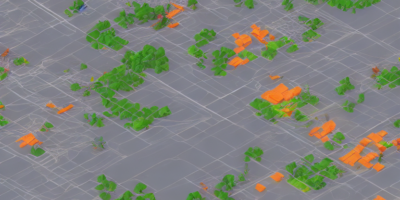Molecular docking is a crucial step in drug discovery, involving the prediction of protein-ligand interactions. While traditional methods are computationally expensive and time-consuming, machine learning can significantly accelerate the process. In this article, we propose a novel scoring function that leverages machine learning to improve the speed and accuracy of molecular docking.
The Problem: Computational Challenges in Molecular Docking
Molecular docking is a complex task that involves finding the optimal binding pose between a protein and a ligand. Traditional methods rely on the use of force fields, which are simplifications of the true molecular interactions. However, these force fields can be computationally expensive to evaluate, leading to long computational times. As a result, the accuracy of the predictions is often compromised due to the limited computational resources available.
Machine Learning to the Rescue: A New Scoring Function
To address these challenges, we propose a machine-learned based scoring function for molecular docking. Unlike traditional scoring functions that rely on predefined rules and heuristics, our scoring function is defined as a cross-correlation between scalar fields. This enables the use of fast Fourier transforms (FFTs) for rapid search and optimization.
The Key to Our Approach: Scalar Fields and Equivariant Neural Networks
Our scoring function is based on scalar fields, which are mathematical representations of the molecular interactions. These scalar fields can be used to compute the similarity between protein-ligand complexes, allowing for fast search and optimization. We employ equivariant neural networks, which are specialized neural networks that preserve the symmetries of the system being modeled. This ensures that our scoring function is invariant to rotations and other transformations of the molecular structure.
Tradeoffs: Speed vs Accuracy
While our machine-learned based scoring function shows improved performance compared to traditional methods, there are tradeoffs between speed and accuracy. Increasing the accuracy of the predictions often comes at the cost of increased computational time. We investigate these tradeoffs in Figure 8, which shows the Pareto frontier representing the tradeoff between runtime per complex and <2 ˚A RMSD success rate.
Conclusion: A Promising Future for Molecular Docking
Our proposed method holds great promise for accelerating molecular docking while maintaining accuracy. By leveraging machine learning, we can reduce computational times while improving the quality of the predictions. As drug discovery continues to evolve, the ability to efficiently and accurately predict protein-ligand interactions will be crucial. Our methodology offers a significant step towards realizing this goal.



